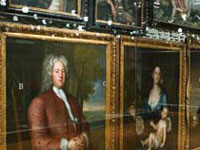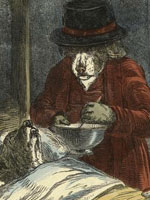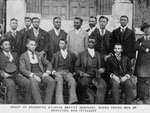Directing my first Teaching American History (TAH) grant in 2003, I had three years to spend nearly a million dollars providing professional development to teachers of American history. What could go wrong?
Plenty, of course. Organizational issues aside, the project faced two challenges. First, given the dollars and the time we had to spend, we simply could not get enough teachers to fill the seats. I have heard over the years TAH grant directors complain about recruitment. "We offer these fabulous programs," they sigh, "but people don’t come."
Program quality could never overcome the structural issue: the teachers in our service area could not consume all the professional development we offer. We had a serious problem of oversupply.
None of the obvious solutions made much sense. We couldn't provide less professional development than the grant proposal promised, or serve fewer teachers. We had to expand our pool of teachers, and expand it quickly.
In New England, with its many districts in a small geographical area, the solution was simple if politically tenuous: invite other districts into a consortium to expand the market for our offerings. We maintained our relationship with our primary partner by providing them with preferred service: guaranteed spots, special privileges, and direct curricular support. Our pool of available teachers tripled, and we seldom had any recruitment issues.
Districts more geographically distributed could achieve the same result through distance learning options. Most higher education partners have that capability already; why not use it?
The second problem had to do with the offerings themselves. The proposal I had been brought in to manage promised a smorgasbord of professional development: institutes, lectures, seminars, and graduate-level courses. We could mix and match as the talents and availability of our historians dictated.
The menu of potential professional development is limited. We asked teachers what they wanted and districts what they would support, and rounded up the usual suspects. But the offerings sometimes sputtered. We filled the seats, and people liked what we gave them, but the self-reported impact on students never satisfied us.
We hit on two solutions, one that any existing grant holder can replicate, and another that has to grow organically out of a proposal from the start.
The organic solution proposes a three-year project that intends to create a specific change in a region. Instead of planning to offer the usual types of professional development organized around a unifying theme, look at what your districts need to organically change the way they teach history.
The first TAH grant I wrote sponsored school-based teams of elementary teachers working together for a year to add flesh to the statewide standards. By the time we finished, a third of the region's elementary schools had gone through the process, and another third had heard detailed reports about the changes.
The second grant supported a research-based induction program for new teachers of American history. Few districts could afford a state-of-the-art induction program, but the TAH grant, coming just as history faculty turned over through retirement, filled that need.
These proposals (and more I have written and received) started from the question, "What do the teachers and districts need to improve history instruction?" rather than "What professional development can we provide teachers and districts?" Districts gladly bought in to these organically conceived proposals. We could explain the grant in a sentence, a sentence that spoke to pressing educational needs.
The other program came almost as an afterthought, when the first grant had an unspent balance. We brought together a group of teachers who had worked with us for years. We asked them to assemble booklets of primary sources that they thought could amplify the richness and meaning of some key documents in American history.
We ended up publishing five booklets—on the Declaration, the Constitution, the Bill of Rights, the Gettysburg Address and "I Have a Dream"—each containing 60 or more primary sources. We distributed them for free to every history teacher in the region. The booklets attracted more money and support, and have been distributed across the state.
The teachers who created the booklets described the work as the best professional development they ever experienced, transformative personally and professionally. And the booklets are used, bringing students closer to primary sources, some obvious and some arcane, than ever before.
TAH grants can provide immense service to students and their teachers. A little creativity makes a world of difference in their success.




